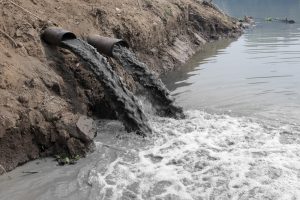The EPA has put the state of Vermont on notice that it must make corrections to its administration of the federal National Pollutant Discharge Elimination System (NPDES) program or lose the authority altogether.
In a letter dated September 6, 2024, the EPA Region 1 administrator informed Vermont authorities it had received a joint petition from the Conservation Law Foundation (CLF), the Vermont Natural Resources Council (VNRC), and the Lake Champlain Committee (LCC), which raised issues with Vermont’s administration of the state’s NPDES program as it relates to the regulation of the state’s Concentrated Animal Feeding Operations (CAFOs) and requested that EPA Region 1 take corrective action or withdraw its authorization of Vermont’s NPDES program, which is administered by the Vermont Agency of Natural Resources (ANR).
Vermont currently uses two agencies, ANR and the Agency of Agriculture, Food, and Markets (AAFM,) to regulate agriculture water pollution in Vermont.
The AAFM plays a critical role in providing support to Vermont’s agricultural industry.
“We understand the importance of AAFM’s mission and role in Vermont, and it is also vital to recognize that the current division of responsibilities between ANR and AAFM is interfering with the regulation of Vermont’s CAFOs and preventing Vermont from adequately addressing agricultural water quality,” the EPA letter states.
Background
The EPA previously received a petition from the Vermont Law School Environmental and Natural Resources Law Clinic in 2008, which resulted in a 2013 Corrective Action Plan in which Vermont agreed to take steps to improve various aspects of its NPDES program, including its approach to CAFOs. The issues identified were:
- Public participation
- Supplemental environmental projects
- Significant noncompliance program
- CAFO
- Antidegradation
- Adequacy of water quality-based effluent limits in permits
- The town of Waterbury wastewater treatment facility permit
- Legislative constraint on regulating municipal discharges of phosphorus
“Based on Region 1’s review of the information contained in the Petition, as well as our own investigation, it is clear that Vermont has not adequately addressed deficiencies in its CAFO program and has not complied with the requirements of the 2013 Corrective Action Plan,” the September 2024 letter states. “The flaws in this program are preventing Vermont from adequately controlling phosphorus discharges from CAFOs, which contribute to severe water quality problems in Lake Champlain and other water bodies in the state. Significant changes to the state’s implementation of the program are necessary to ensure Vermont meets the obligations associated with its NPDES authorization.”
To keep its NPDES permitting authority, the EPA is requiring Vermont to take the following actions:
- ANR, the state agency with authority to administer the Clean Water Act (CWA) program, must be responsible for CAFO permitting, monitoring, and enforcement relevant to implementing the CWA’s NPDES program on Vermont’s farms. This includes making ANR responsible for conducting routine inspections, enforcing nutrient management planning requirements, and administering discharge permits. While the EPA recognizes the critical role played by the AAFM in addressing agricultural water pollution, Vermont’s extensive sub-delegation of authority to the AAFM has undermined the state’s NPDES program and rendered it out of compliance with CWA requirements.
- Vermont must provide ANR with sufficient resources to administer the NPDES program to meet CWA requirements.
“Therefore, to expeditiously resolve ANR’s failure to carry out its obligations as the entity authorized to administer the NPDES program and avoid program removal, ANR needs to present a proposed corrective action plan and timeframe for resolution of the issues to EPA on or before December 5, 2024 (90 days from receipt of this letter). The corrective action plan must meet the following requirements:
- ANR personnel must inspect all potentially jurisdictional farms to determine if a CAFO permit is required;
- ANR personnel must review nutrient management plans and issue CAFO permits consistent with state and federal requirements;
- ANR must comprehensively track permitting, monitoring and enforcement actions;
- ANR must enforce against farms that are discharging without a permit;
- ANR must have sufficient personnel to fully implement the foregoing requirements in a timely manner;
- ANR must seek the necessary statutory and regulatory authority to fully implement the CWA requirements; and
- ANR must include a reasonable but expeditious timeline, including a date certain for the completion of a corrective action plan.”

